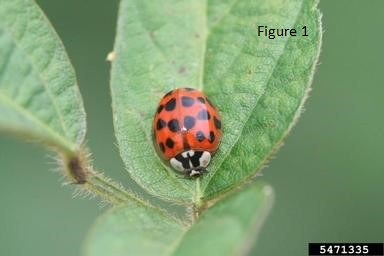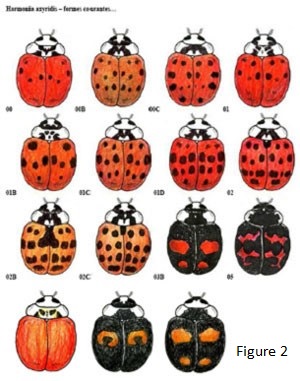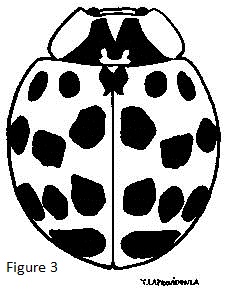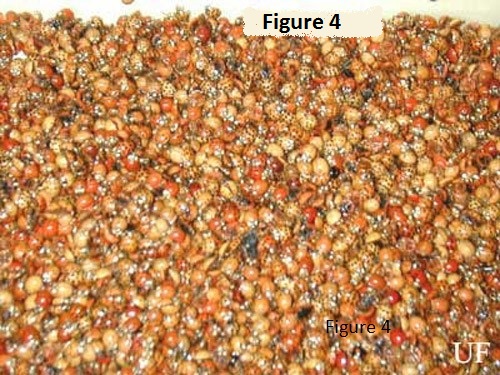Introduction
This is the third installment regarding insects that take up residence in our homes and offices, finding a warm place to pass the winter. This one is about the Multicolored 
Description

One easily identifiable feature in the typical orange morph that distinguishes this lady beetle from others is the predominantly 
Behavior
As the weather begins to cool, generally around the first of October, and aphid prey is becoming scarce, flights to overwintering sites are triggered, and occur progressively from northern to southern latitudes. In North Carolina these flights will generally occur from mid-October to mid-November. The beetles will aggregate in large numbers on structures which usually are white, beige, or tan and mostly on south or west facing walls because these surfaces are very highly reflective and visible to the beetles for miles. In their native Asian range, they congregate on light colored rock formations where they overwinter in cracks and crevices. In addition, once entrance is gained into a structure, the beetles release an aggregation pheromone making it even more attractive to more and more individuals. Unfortunately, evidence of this pheromone remains in the building and makes it attractive to beetle infestation the following winter.

Managing the Beetles
The best strategy is to exclude the beetles before they enter. Seal any cracks, crevices, or holes around exterior windows and doors with caulk. Ensure that soffits around eaves are tight fitting. Most gable vents are fitted with ¼ or 3/8-inch hardware cloth to prevent insects from getting into the attic. Tack window screen over the hardware cloth on the attic side.
If already inside the building and are accessible, use a vacuum cleaner to suck up the beetles. Be sure to empty the bag or canister in a timely manner because the beetles have a disagreeable odor which will permeate the vacuum.
Ken Ahlstrom, Ph.D., Economy Exterminators, Inc., Apex, NC 27523
Picture credits:
Figure 1 – Darren Mueller, IA State Univ. Bugwood.org
Figure 2 – Economy Exterminators, Inc.
Figure 3 – Kimberly Stoner, CT Agr. Exp. Sta. New Haven
Figure 4 – Russell F. Mizell, Univ. of FL




